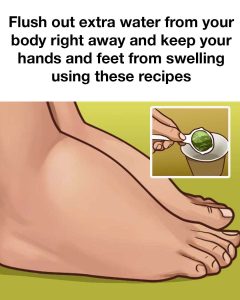
Dietary Tips to Reduce Water Retention
Certain dietary changes can help manage fluid retention:
Reduce Sodium: Cut back on salty foods like processed snacks and canned goods.
Increase Potassium: Foods like bananas, avocados, and sweet potatoes help balance sodium and reduce swelling.
Eat Whole Foods: Focus on fruits, vegetables, lean proteins, and healthy fats to support fluid balance.
Foods and Drinks to Flush Out Excess Water
Some foods act as natural diuretics, helping to remove excess fluid:
Cucumbers, watermelon, and celery are hydrating and help flush out water.
Herbal teas, such as dandelion or parsley tea, have diuretic properties that promote fluid loss.
Smoothies made from ingredients like kale, pineapple, and cucumber can provide anti-inflammatory benefits and help with fluid retention.
Other Remedies for Water Retention
Epsom Salt Soaks: Soaking your feet or hands in warm water with Epsom salt can help reduce swelling.
Exercise: Regular movement improves circulation, which helps prevent fluid buildup.
Elevate Your Legs: Lifting your legs helps fluids return to the upper body, reducing swelling.
Conclusion
Water retention is a common issue, but with the right diet, hydration, and lifestyle changes, it can be managed effectively. By understanding the causes and symptoms, you can take steps to prevent and reduce swelling, helping you feel more comfortable and healthy.